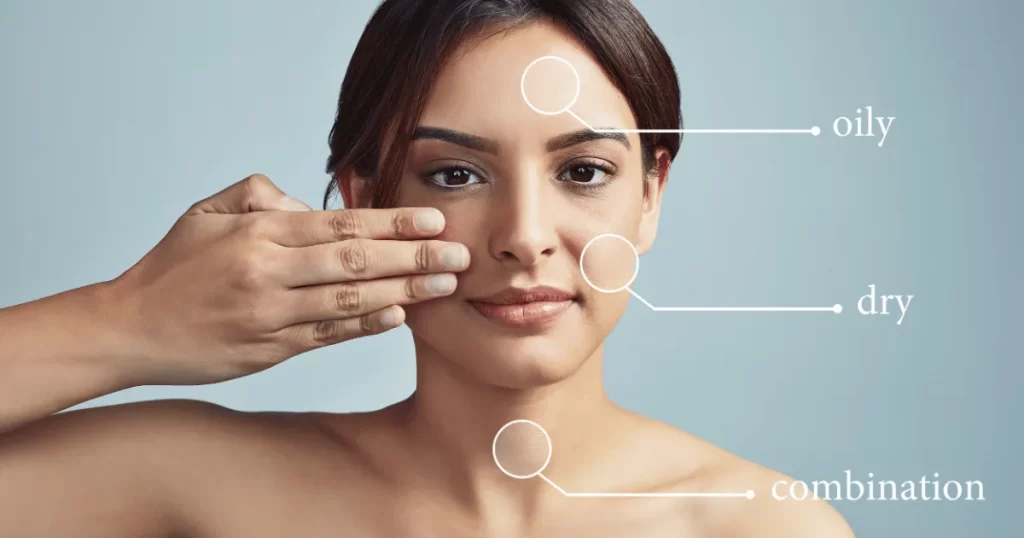A customized skincare routine is like tailoring a dress to fit you perfectly. Just as no two people share the exact measurements, your skin has distinct needs and characteristics.
In the realm of skincare, adhering to a one-size-fits-all approach simply falls short of the mark. Rather than blindly following the latest trends, it’s crucial to embrace your skin’s individuality. Once you’ve pinpointed your skin type and its specific quirks, the next step is embarking on the rewarding journey of curating a skincare regimen tailored precisely to your skin’s requirements.
Your skin serves as your body’s largest organ and acts as its first line of defence against the external world. It endures constant exposure to a range of environmental elements, from the unforgiving embrace of UV rays to the impacts of pollution, all while continuously regenerating itself. Each individual’s skin boasts a distinct texture, tone, sensitivity, and hydration demands.
Ingredients Matter
Skincare ingredients are like the secret sauce that can make all the difference. You see, the beauty of skincare is that it’s not just about slathering products on your skin; it’s about nourishing it from the inside out.
Vitamin C: Ah, the golden child of skincare ingredients! Vitamin C is like a burst of sunshine for your skin. It’s known for its brightening properties, helping to fade those pesky dark spots and giving your skin a radiant glow. Not to mention, it’s a powerful antioxidant that can help protect your skin from environmental damage.
Hyaluronic Acid: If your skin were to pick its BFF, hyaluronic acid might just be it. This superstar ingredient is a master at hydration. It has an incredible ability to attract and retain water which keeps your skin plump and well-hydrated. Hyaluronic acid is like a big drink of water for your skin, and who doesn’t want that?
Retinol: Consider retinol the wise old sage of skincare ingredients. It’s a form of vitamin A that’s been trusted by skincare enthusiasts for decades. Retinol is your go-to for addressing issues like fine lines, wrinkles, and acne. It encourages cell turnover, helping your skin shed its old layers and reveal the fresh, youthful skin beneath. However, note that retinol can be a bit potent, so it’s best to introduce it gradually into your routine.
Now, here’s the thing, not all products are created equal, and that’s perfectly okay. Your bestie might be raving about a particular product, but it might not have the same magic on your skin. It’s all about finding your skin’s favourite ingredients.
Experiment with different products pay attention to how your skin reacts, and over time, you’ll discover which ingredients your skin adores.
Morning and Evening Routines
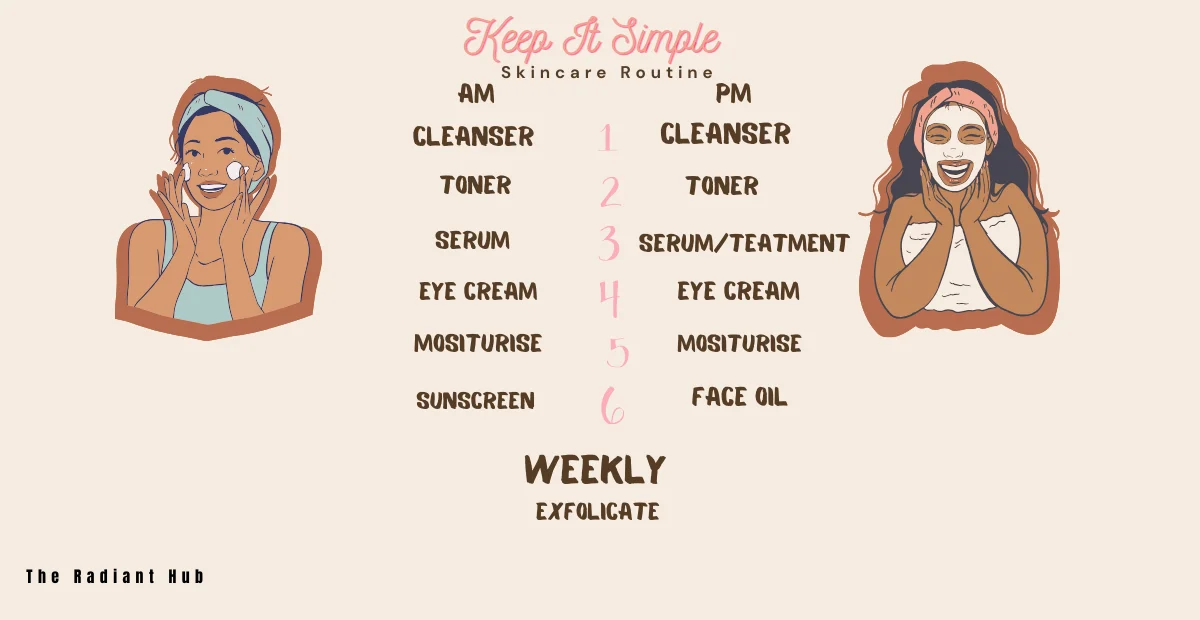
Your skin’s needs change as the day progresses. That’s why a well-rounded morning and night skincare routine is essential. These two routines work together to keep your skin healthy, vibrant and prepared for the challenges it faces throughout the day.
In the morning, focus on protecting and preparing your skin for the day ahead. At night, it’s all about recovery and repair. With occasional face masks, consider incorporating a weekly or bi-weekly mask for a little extra pampering and targeted treatment.
Remember that consistency and using products suited to your skin type are key to achieving the best results.
Skincare Routine Ritual
Cleansing
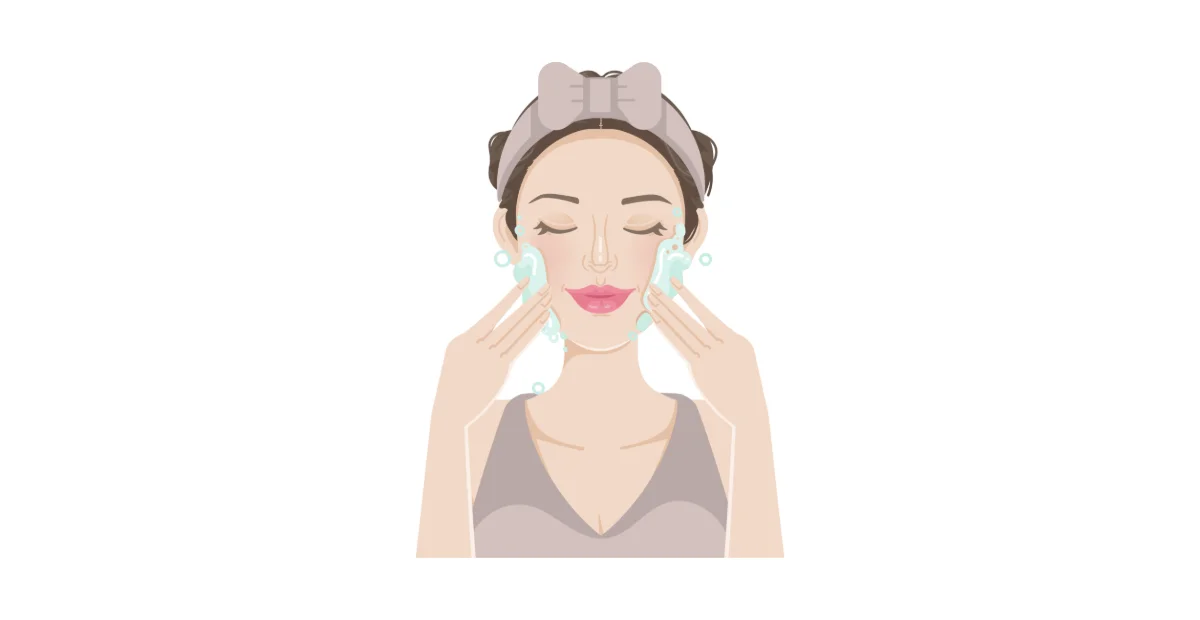
Cleansing is your superhero in shining armour, swooping in to rescue your skin. Start your routine by cleansing your face to remove dirt, impurities, and excess oil. Find a cleanser that suits your skin type, and give your face the TLC it deserves.
Cleansing, cleansing, cleansing! A clean canvas is essential for any masterpiece. So, choose a gentle cleanser that suits your skin. For instance, if you have dry skin, opt for a hydrating cleanser, while those with oily skin may benefit from a foaming or gel-based cleanser.
Use a gentle cleanser suitable for you, but be gentle. Harsh scrubbing can do more harm than good. Massage it onto damp skin in upward circular motions, then rinse thoroughly with lukewarm water.
Toning
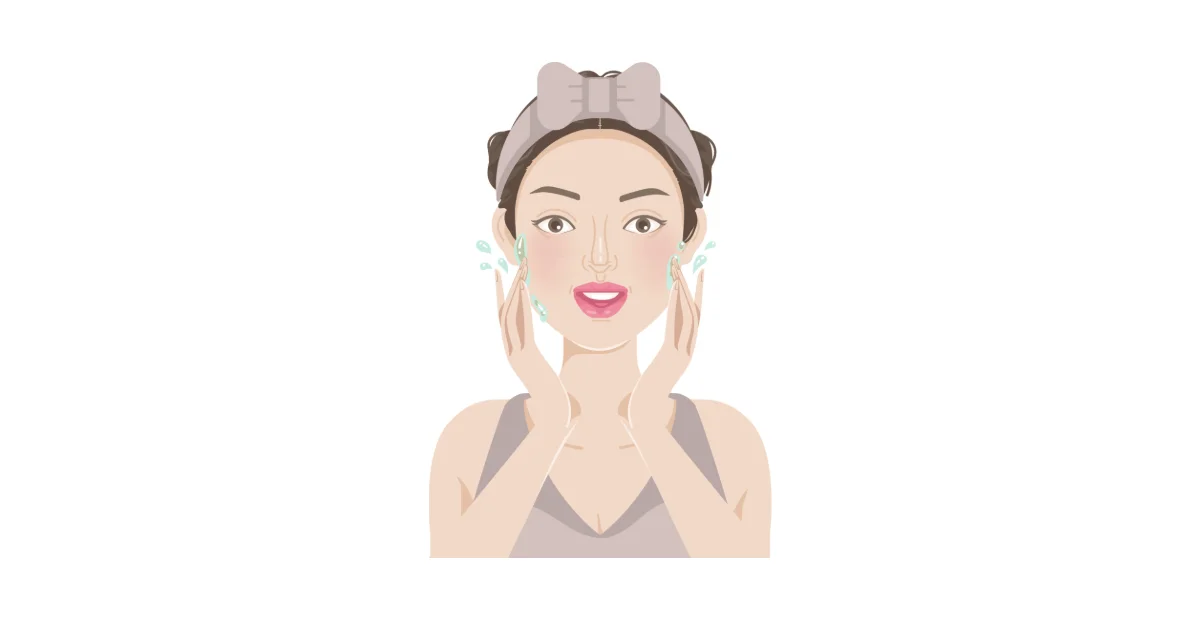
Toning is a vital skincare step. Choose an alcohol-free toner. It acts like a harmonizing conductor, balancing your skin’s pH levels. The first step is selecting a toner that matches your skin type.
Look for one that’s alcohol-free to avoid any unnecessary dryness or irritation. Whether your skin is oily, dry, sensitive, or a combination, there’s a toner out there that’s perfect for you.
There are a couple of ways to apply your toner. You can use a cotton pad to gently swipe it across your face. This method is great for removing any last traces of dirt or makeup. Alternatively, you can pour a small amount of toner into your palm and pat it on your skin.
This is a gentler approach, which is perfect for those with sensitive skin. The beauty of toning is that it helps prepare your skin to absorb the goodness of the products you’ll apply next.
Serums
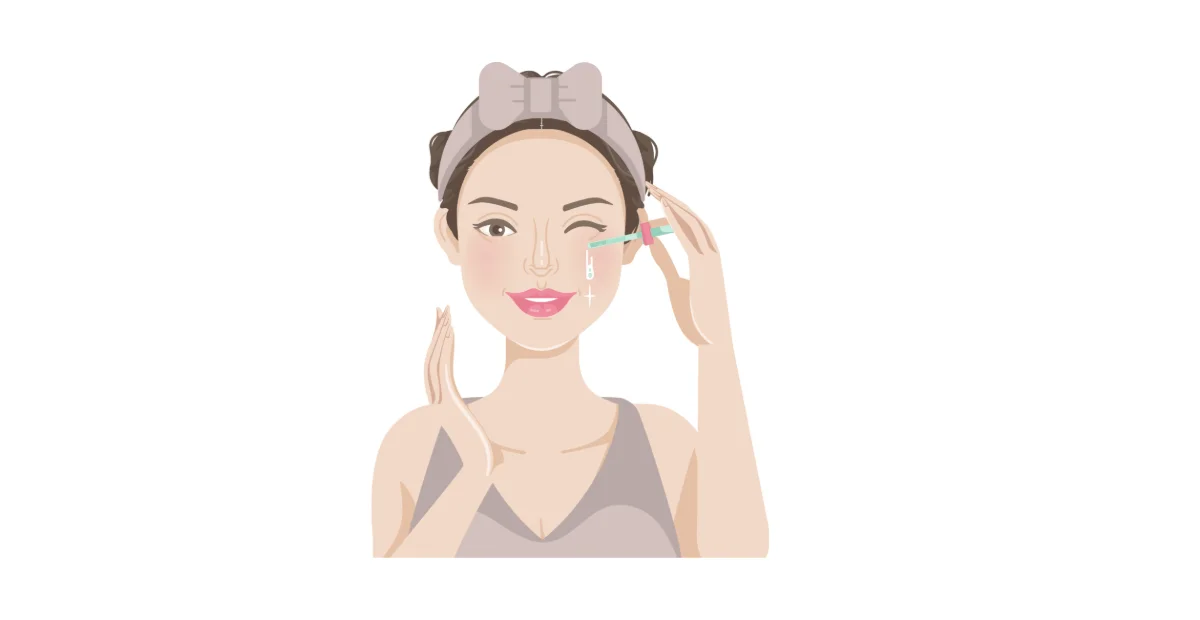
Serums are like concentrated potions for your skin. They pack a punch with a high concentration of specific ingredients. One of the fantastic things about serums is that they come in various formulations, each targeting specific concerns.
Antioxidant Serums: These superheroes protect your skin from damage caused by those pesky free radicals. You’ll often find ingredients like Vitamins C and E in these serums, which work wonders for improving texture and firmness.
Watch out for other antioxidants like green tea, resveratrol, and caffeine. Antioxidant serums can be your allies in the fight against redness, wrinkles, and overall skin damage.
When applying your serum, just a few drops onto your face and neck can work wonders. However, it’s a good practice to test a new product in a small area to ensure it plays well with your skin and the other products in your routine.
Moisturizing
Eye Cream
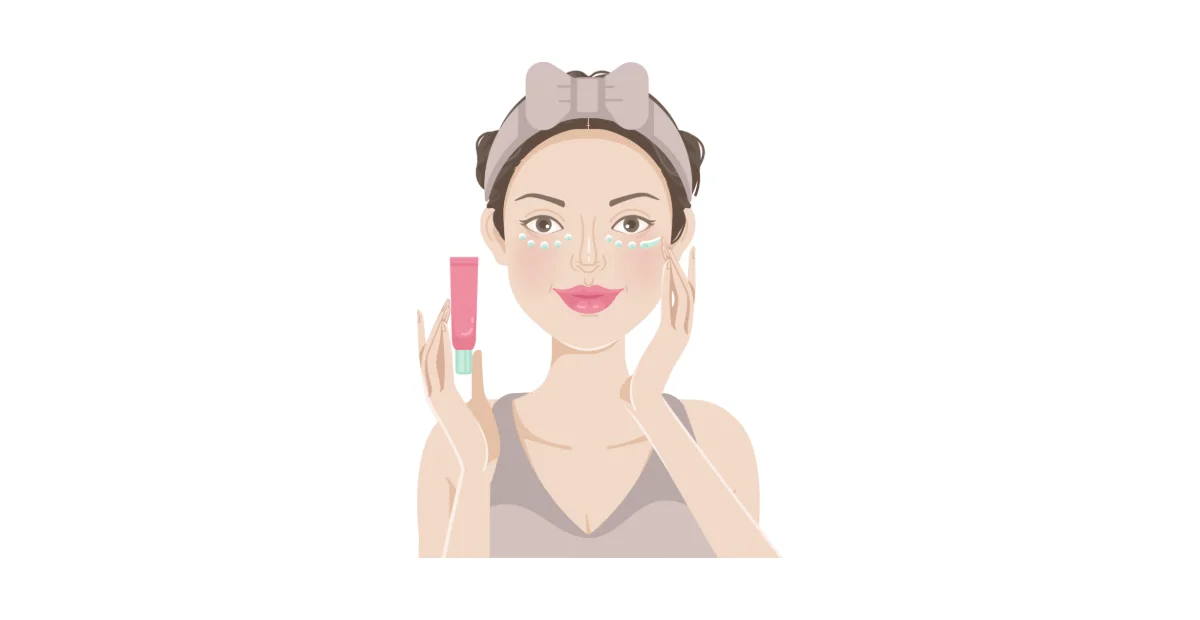
This is a helpful tip for anyone looking to improve their skincare routine: after applying moisturizer, it’s important not to forget about the delicate skin around your eyes. This area is prone to fine lines and wrinkles, so using an eye cream can make a difference.
I recommended applying eye cream twice a day for maximum hydration and anti-aging benefits. Remember, regardless of your skin type, moisturizing is a crucial step for healthy, happy skin.
Face Cream
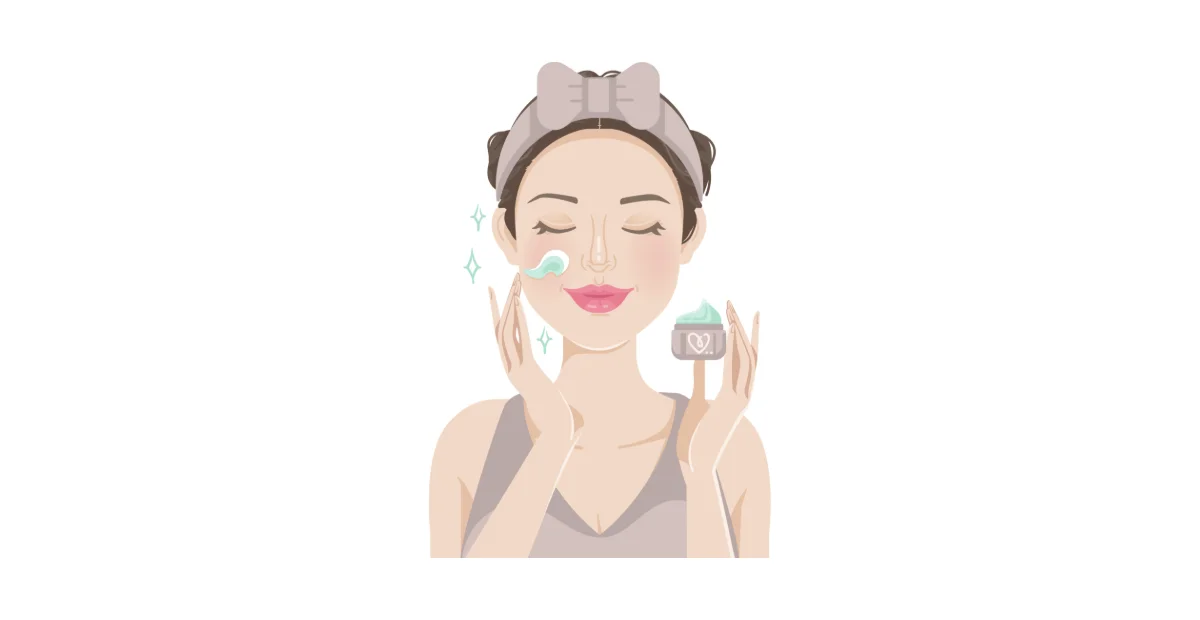
Moisturizing your skin is just as important as eating a nourishing meal. It helps keep your skin hydrated, smooth, and radiant. Even if your skin tends to be oily, don’t skip moisturizing.
Just make sure to choose a lightweight, oil-free, and non-comedogenic moisturizer that will keep your skin hydrated and protected. If you have dry skin, be sure to choose a rich and hydrating moisturizer and apply it evenly, focusing on any dry areas.
Sun Protection
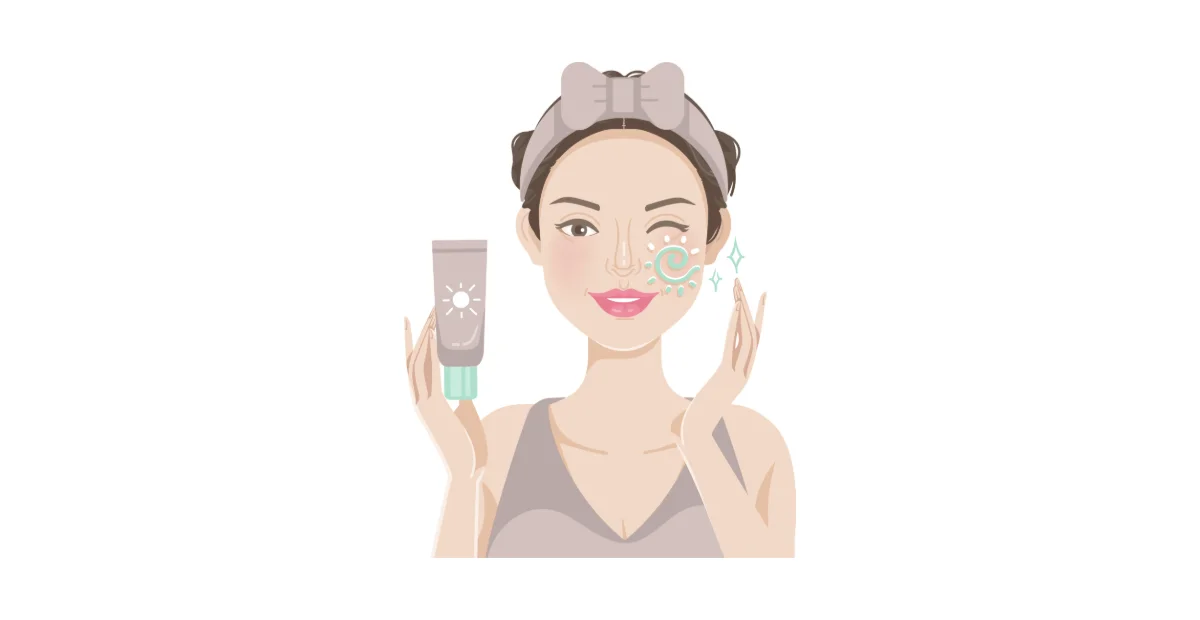
Protecting your skin from harmful UV rays is important for maintaining healthy and youthful skin. Sunscreen is not just for beach days; it should be incorporated into your daily skincare routine.
A broad-spectrum sunscreen with an SPF of at least 30 can help prevent premature aging and skin damage caused by the sun. Be sure to apply it generously on all exposed areas and make it a daily habit to apply sunscreen. Trust me, this small step can make a big difference in the long run.
Face Oil
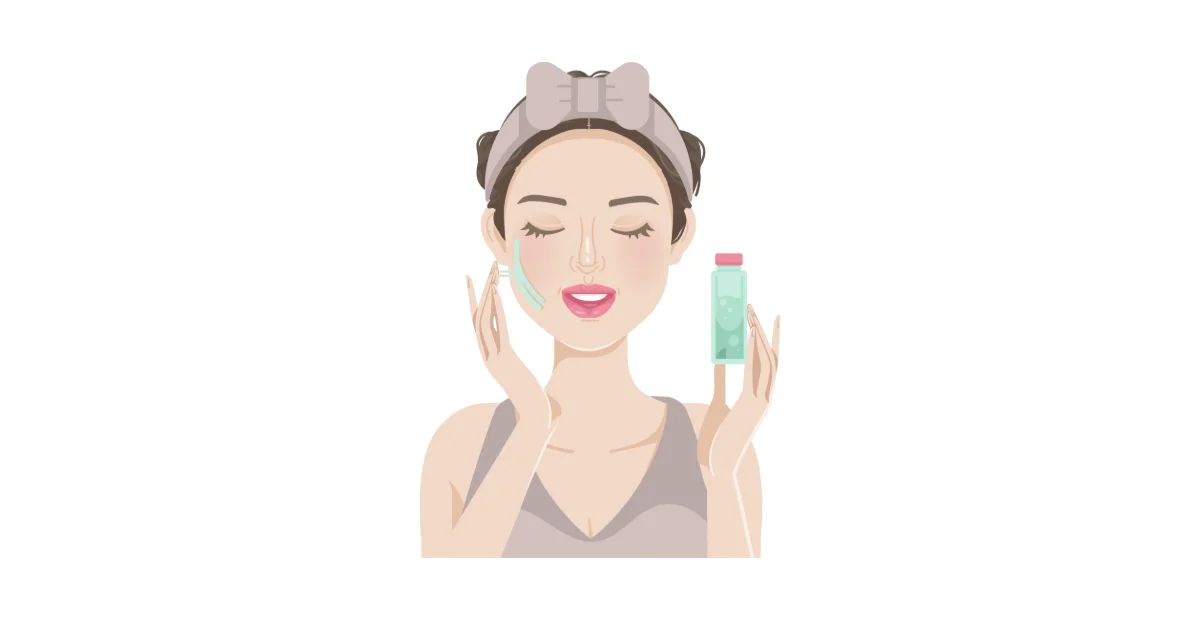
Face oils can be a luxurious addition to your skincare routine. They offer nourishment, hydration, and other benefits depending on the type of oil you choose. Here’s a quick overview of face oils and how to incorporate them into your routine:
Types of Face Oils
Hydrating Oils: These oils, like jojoba oil or argan oil, provide deep hydration and can be particularly beneficial for dehydrated skin. They help lock in moisture and keep your skin feeling soft and supple.
Antioxidant Oils: Oils such as rosehip oil or marula oil are rich in antioxidants. They can help protect your skin from free radicals, reduce signs of aging, and promote a radiant complexion.
Balancing Oils: If you have oily or acne-prone skin, don’t shy away from face oils. Certain oils, like squalane or grapeseed oil, are lightweight and can help regulate sebum production while providing essential moisture.
Anti-Inflammatory Oils: Chamomile or calendula oil has soothing and anti-inflammatory properties, making them great for sensitive or irritated skin.
Face oils can be a versatile addition to your skincare routine, suitable for both morning and night applications. My personal preference is to use them as the final step in my evening regimens to enhance hydration, while others mix a few drops with their moisturizer in the morning for a dewy finish.
A little goes a long way with face oils. Gently press or massage the oil into your skin for even distribution. If your skincare routine includes other products such as serums, consider applying your face oil after your serum and before your moisturizer. This strategic order allows the oil to effectively seal in the benefits of the preceding.
Exfoliation
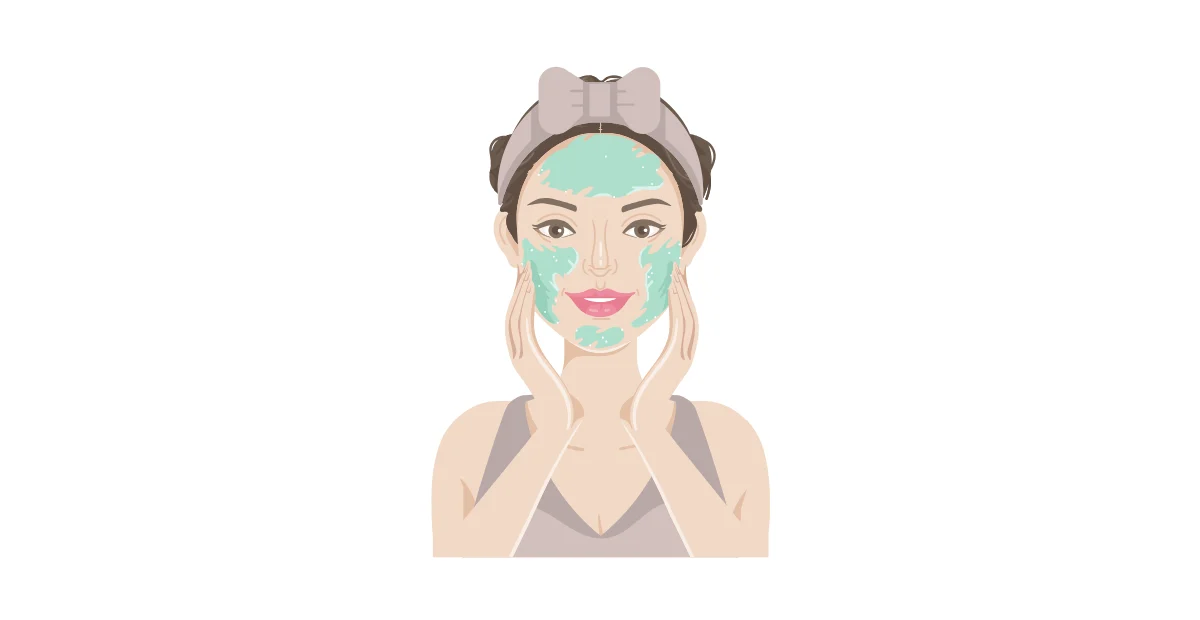
Exfoliation is like a mini spa day for your skin, it’s a great way to pamper your skin and give it a healthy glow. Removing dead skin cells and unclogging pores can help reveal the fresh, radiant skin underneath. However, it’s important to avoid overdoing it. Twice a week is typically enough, and remember that a little bit of exfoliation can go a long way.
Pro Tips
Taking care of your skin is a universal need, and there are some essential dos and don’ts that apply to all skin types.
Do’s
- Follow a Skin Care Regimen Suited to Your Skin Type
- Remove All Makeup Before Bed
- Drink Adequate Water to Remain Hydrated
- Apply a Broad-Spectrum Sunscreen Daily
- Wear a Hat and Sunglasses When in Direct Sunlight
Don’ts:
- Avoid Using Tobacco Products
- Limit the Excessive Use of Alcohol products
- Avoid Tanning Beds.
Targeted Treatments: If you have specific skin concerns such as acne, pigmentation, or fine lines, consider incorporating targeted treatments like serums or spot treatments into your routine.
Adjustments as Needed: Your skin isn’t static. It changes with the seasons, your age, and other factors. Be ready to adjust your routine as your skin’s needs evolve.
Listen to Your Skin: Perhaps the most critical aspect of a personalized skincare routine is being attuned to your skin’s feedback. If a product is causing irritation or your skin isn’t responding well to a particular routine, don’t hesitate to make changes.
Remember, building a personalized skincare routine is an ongoing process. It requires patience and a willingness to experiment to find the products and techniques that work best for your unique skin. Don’t be discouraged by occasional setbacks, as skincare is not an exact science, and what works for you might not work for others. Developing a skincare routine that’s tailor-made for your skin is a journey, but the rewards are well worth the effort. So, embark on this path to flawless skin with confidence, and your dream skincare routine will become a reality.


